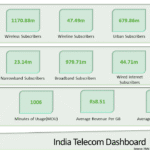India’s electric vehicle (EV) market is expected to witness significant growth in the coming years, with sales projected to reach 9 million units per annum by 2027. The Indian EV market is forecasted to expand from US$ 3.21 billion in 2022 to US$ 113.99 billion by 2029, with a 66.52% CAGR. By 2030, the government intends to have an EV sales penetration of 30% for private cars, 70% for commercial vehicles and 80% for two and three-wheelers, Nitin Gadkari, Minister of Road Transport and Highways (MoRTH), stated in 2021. To accelerate this growth and become a major player in the EV industry at the global level, India can learn valuable lessons from the success stories and strategies of other countries. By adopting these global best practices, India can enhance its EV ecosystem and drive sustainable transportation.
Manufacturing Prowess and Sustainable Growth: Emulating China’s Success
China has emerged as a manufacturing powerhouse in the EV market, accounting for nearly 60% of global EV production in 2023. Companies like BYD and NIO have led the charge, with BYD surpassing Tesla in global sales when considering both plug-in hybrids and battery electric vehicles (BEVs). A key element of China’s strategy has been aggressive pricing which resulted in EVs becoming more accessible to a broader range of consumers, apart from driving higher sales volumes and accelerating market penetration. For instance, the BYD Sea Lion 07, priced at approximately $26,250, is strategically lower than Tesla’s Model Y, which starts at around $34,550. By focusing on affordability without compromising quality, Chinese manufacturers have effectively captured 60% share of the global EV market.
Apart from aggressive pricing, China’s commitment to reducing carbon emissions has also increased EV adoption. The government has set ambitious targets for renewable energy, aiming for 1,200 GW of installed capacity by 2030, with a major focus on solar and wind power. These investments ensure that the increasing number of EVs are supported by an environmentally friendly power grid.
Additionally, China has built a nationwide network of EV charging stations, with over 1.85 million public charging points by the end of 2023, accounting for over 70% of the global total. This extensive infrastructure, powered by renewable energy, enables long-distance travel without relying on fossil fuels. The availability of numerous charging points alleviates range anxiety and supports the practical adoption of EVs for everyday use. This comprehensive approach has positioned China as a leader in the global transition to electric mobility.
Technological Innovation: Lessons from Japan and Germany
Japan’s Toyota has excelled in solid-state battery development and plans to launch batteries that promise higher energy densities, improved safety, and ranges up to 745 miles by 2027-2028. Similarly, Germany’s Volkswagen has made significant investments in battery technology through its PowerCo battery unit, which works on solid-state batteries that have the potential to enable EVs to drive over 500,000 kilometres (311,000 miles) with minimal range loss.
Government Policies and Incentives: Insights from Norway
Norway’s success in EV adoption highlights the importance of supportive government policies. The Norwegian government has implemented a series of incentives, including exemption from vehicle registration and high purchase taxes, reduced road tolls, free parking, and access to some bus lanes. For example, Norway exempts EVs from several taxes. EVs are exempted from the 25% value-added tax (VAT) on purchases and leases. Additionally, the government incentivizes EV adoption through exemptions of a minimum 50% reduction in road taxes and tolls. Such policy driven approaches has helped Norway to achieve over 80% of new car sales in Norway by 2023.
Charging Infrastructure: Learning from the U.S. Model
The United States has made significant investments in developing a nationwide network of EV chargers to support long-distance travel for EV owners. The Bipartisan Infrastructure Law (2023) allocated $7.5 billion to build a national network of 500,000 public EV chargers by 2030. Additionally, private companies like Tesla have played a pivotal role by establishing an extensive Supercharger network across the country, with over 35,000 Superchargers installed globally as of 2023.
The U.S. government has also launched initiatives such as the National Electric Vehicle Infrastructure (NEVI) Formula Program, which provides $5 billion in funding to states to build out their EV charging infrastructure along designated Alternative Fuel Corridors. This program aims to create a seamless network of chargers, making it easier for EV drivers to travel long distances without range anxiety.
Market Diversification: Insights from Europe
European countries have successfully diversified their EV markets by encouraging a wide range of manufacturers to compete. This has led to increased competition, innovation, and more choices for consumers.
In 2023, Chinese automaker BYD sold approximately 16,000 electric cars in Europe, marking a substantial entry into the European EV market. This influx intensified the pressure on established European brands such as Volkswagen, Renault, and Peugeot to innovate and offer more affordable EV options.
Similarly, Tesla’s growing presence in Europe has spurred other automakers to invest heavily in their own EV lineups. Volkswagen, for instance, has committed to investing around $193 billion in electric mobility by 2027. The company plans to launch over 70 new EV models across its various brands, including Audi, Porsche, and Škoda, to cater to diverse consumer preferences.
Battery Technology: Insights from South Korea
South Korea has emerged as a global leader in battery technology, driven by its major manufacturers like LG Chem and Samsung SDI. These companies have made significant strides in advancing battery performance, focusing on key areas such as energy density, charging speed, and battery life.
For instance, LG Chem has developed a cell-to-pack (CTP) design that integrates the battery cells directly into the pack, eliminating the need for modules. This innovative approach promises to increase energy density by up to 10% and reduce manufacturing costs.
Similarly, SK On, the fifth-largest battery maker globally, has introduced its “Super-Fast (SF) Battery” that can charge up to 80% of its capacity in just 18 minutes. The company is now working on an advanced version of the SF Battery that boasts a 9% higher energy density while maintaining the same fast-charging capability. SK On is also developing lithium iron phosphate (LFP) batteries with improved cold-weather performance, addressing a key challenge for EV adoption in colder climates.
Furthermore, Samsung SDI, the world’s sixth-largest battery maker, is poised to unveil its plans for mass production of solid-state batteries. Solid-state batteries are considered a game-changer in the EV industry, offering higher energy density and improved safety compared to traditional lithium-ion batteries. Samsung SDI’s progress in this technology could position South Korea at the forefront of the next generation of battery innovation.
Key Takeaways
- India can boost its EV industry by investing in domestic manufacturing and offering competitive pricing to make EVs more accessible.
- Developing a robust R&D ecosystem will lead to advancements in battery technologies and other EV components.
- Providing substantial incentives to consumers and manufacturers, along with expanding charging infrastructure, will drive EV adoption.
- Prioritizing the development of a comprehensive and reliable charging network will address range anxiety and encourage more consumers to switch to electric vehicles.
- Encouraging both domestic and international manufacturers to set up operations in India will foster competition, drive down prices, and spur innovation.
- Integrating renewable energy sources with EV charging infrastructure will enhance green mobility in India.





